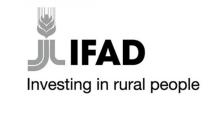Resource information
Poverty in the Near East and North Africa region (NENA) is mainly a rural phenomenon. Almost half (48%) the area’s population lives in rural areas. This report focuses on key rural poverty issues in 13 diverse countries in the region, without attempting to propose policy or programme actions at national or local levels. Overall, the rural poor still face traditional constraints such as water scarcity, inadequate rural infrastructure, inappropriate policies and institutions, weak local-level organisations and gender inequity. They are also affected by new trends in migration, globalisation, changing trade patterns and increasing unemployment amongst young men and women.Conclusions on some of the areas covered include:
Hunger and food insecurity: the rate of reduction of malnutrition (amongst children) is slow and overall food insecurity is not improving
Private investment in rural enterprise is severely constrained by poor rural infrastructure, inadequate access to rural finance, insufficient availability of local skills and competition from Chinese low cost products
Access to/sustainability of natural resources such as water, land and pasture is rapidly deteriorating as a result of increasing population density and pressure. This scarcity is likely to be aggravated in coming years as a result of global warming and climate change
Rural infrastructure and social services: access to water and sanitation facilities is below the world average, however, there has been a lot of progress in the areas of health and education
Conflict and adverse climatic conditions causing food deficits, loss of livelihoods and population displacement: over 3 million people in the region are officially displaced as a result of conflict
Gender inequity: this remains a major hindrance to rural development. Constraints on women include excessive workload as a result of poor infrastructure, scarce resources and migration of men and poor access to health services
This report covers the following countries: Algeria, Djibouti, Egypt, Jordan, Lebanon, Morocco, Somalia, Sudan, Syria, Tunisia, Turkey, Yemen



